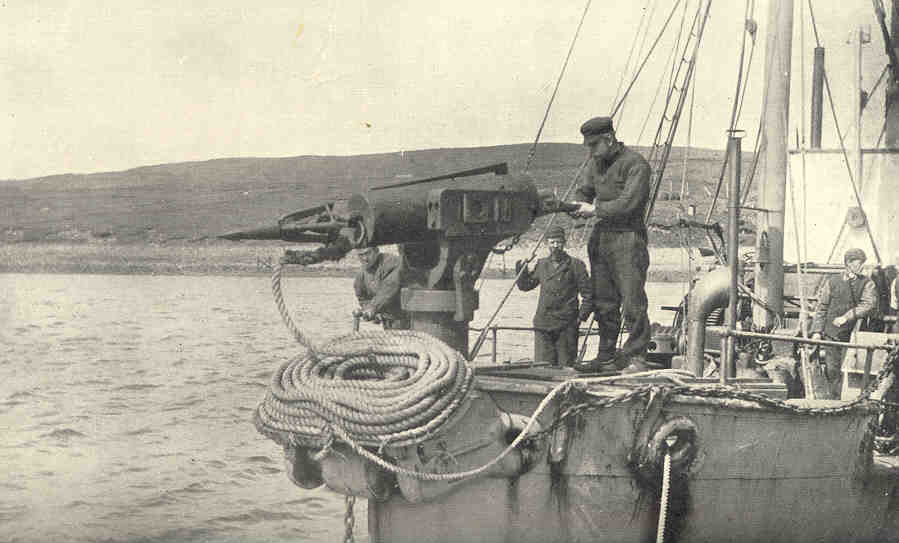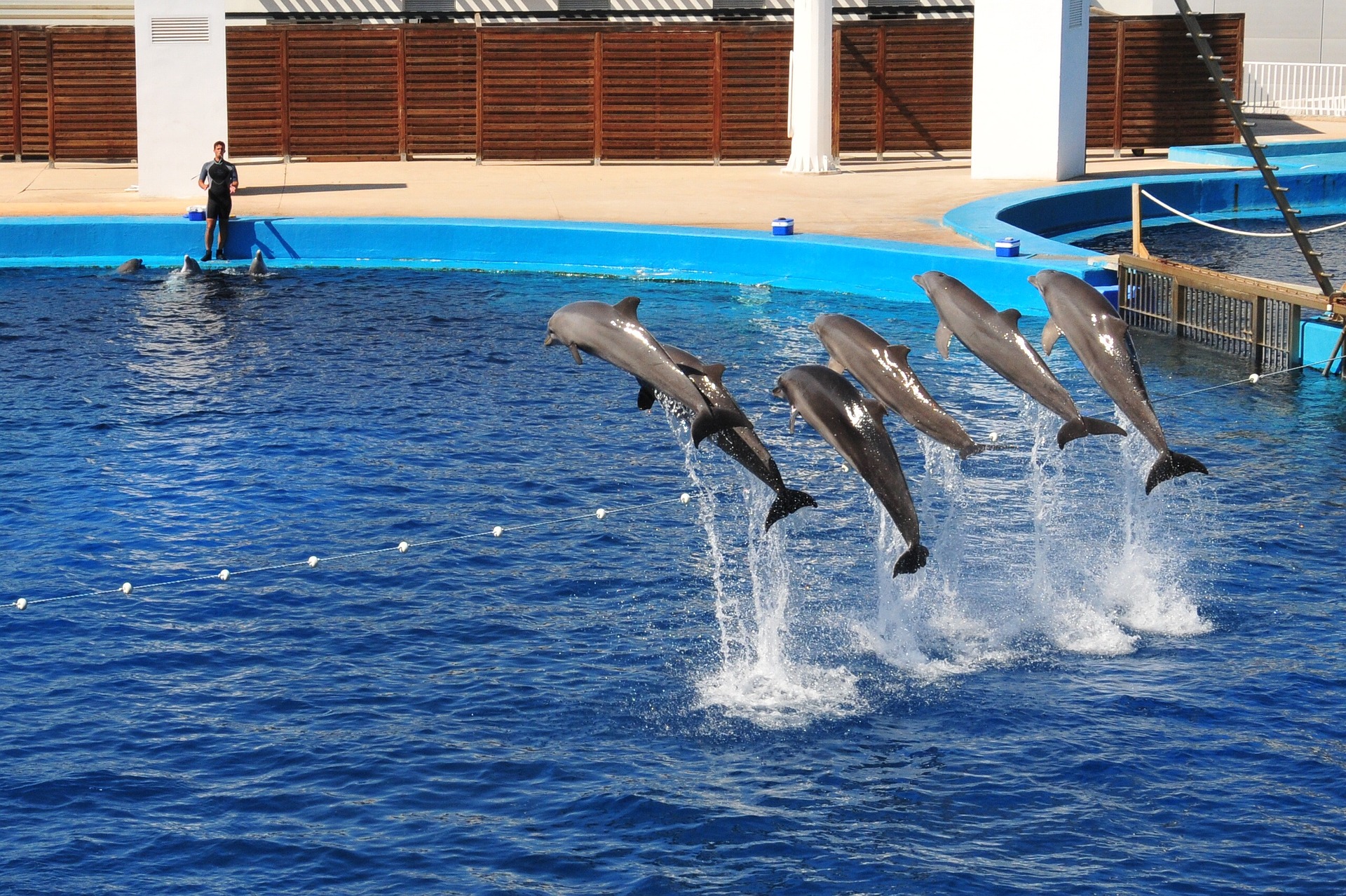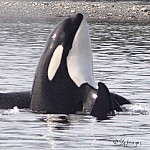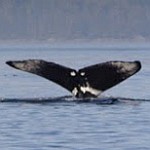The hunting of whales and dolphins has taken place on every continent for millennia. First Nations people around the world hunted marine mammals for their subsistence. Their hunting practices were and still are sustainable as they take only what they need from the sea. Destructive hunting practices appeared at the end of the 19th century in North America after the settlement of Europeans on the continent. These unsustainable hunting practices over many decades drove many whale and dolphin species to the brink of extinction in the 20th century.
A cannon-loaded harpoon on a whaling ship in the 1920’s. Source: Freshwater and Marine Image Bank (U. of Washington)
Humpback whales were hunted extensively in North America and worldwide. The International Whaling Commission estimated the number of Humpback whales in the pre-whaling era to be about 500,000 worldwide and 50,000 in the North Pacific. Their population was decimated and reached an estimate as low as 600 individuals in the North Pacific in 1966. That same year, the International Whaling Commission banned hunting of Humpback whales in the North Pacific. Fortunately, Humpback whales have recovered and their number is estimated to be about 23,000 in the North Pacific and 70,000 to 80,000 worldwide.
Orca populations in the waters of British Columbia have also declined due to hunting and live-captures. In the 1940-1950s, Orca were often used as target practice by the Canadian and American Air Forces. The number of whales that were brutally killed by the military is unknown. Fishermen also considered Orca as competitors since the Southern and Northern Residents off the coast of British Columbia and Washington State feed on salmon. The bullet wounds carried by many Orca in the 1950’s reflected the way some fishermen viewed and treated Orca. A machine gun was even installed on the coast of Vancouver Island in 1950 in order to target Orca swimming by. Fortunately, the gun was never fired.
The live-capture of Orca was perhaps one of the most devastating practices for the pods off the coast of British Columbia. This practice was brutal and merciless. The animals were herded with explosives, airplanes, and high-speed vessels, some being killed in the process. Live-capture of Orca for displaying in aquariums began in 1961 in California and 1964 in British Columbia.
In 1964, an Orca was harpooned off Saturna Island B.C. in order to be used as a sculpture model. The Orca did not die, and it was brought to Vancouver and placed in a sea pen where it survived close to 3 months. The Orca, named Moby Doll, became an instant celebrity. As interest in Moby Doll grew, the perceptions of Orca changed as dangerous animals to intelligent animals that man can interact with. So began the display of Orca by aquariums worldwide and a wider interest in Orca by scientists.
The records show that 30 whales had been captured in our waters by 1970 and 30 more by 1975. The documentary Blackfish discusses the capture and later problems which arose from captive Orca. After citizens spoke against the capture of Orca, this practice was banned in 1976 in the US and 1982 in Canada. Today, live-capture of Orca still occur. In Russia since 2002, 19 Orca have been captured and placed into aquaria. Japan is also well known for its live-capture and dolphins hunt which sends animals to aquaria every year and kills thousands of others (see Ric O’Barry’s Dolphin Project – The Cove at https://dolphinproject.com/ ).
After a heated debate in January 2018, the Vancouver Aquarium announced they will no longer display whales and dolphins. While many animal advocates are celebrating, some scientists at the Vancouver Aquarium Marine Mammal Rescue Centre are concerned this decision will hinder their conservation work. They will continue to rescue and rehabilitate marine mammals, including whales and dolphins, but they will not be able to display them, which, they believe will decrease their ability to raise awareness around the conservation of many Cetaceans.
What can you do?
- Support the ban of Orca and dolphins in captivity other than rescue programs.
- Help raise public awareness about the issue.
- Find locations from land where you can observe Cetaceans at sea.
- Encourage governments to establish laws to enhance conservation efforts of Cetacean species.




